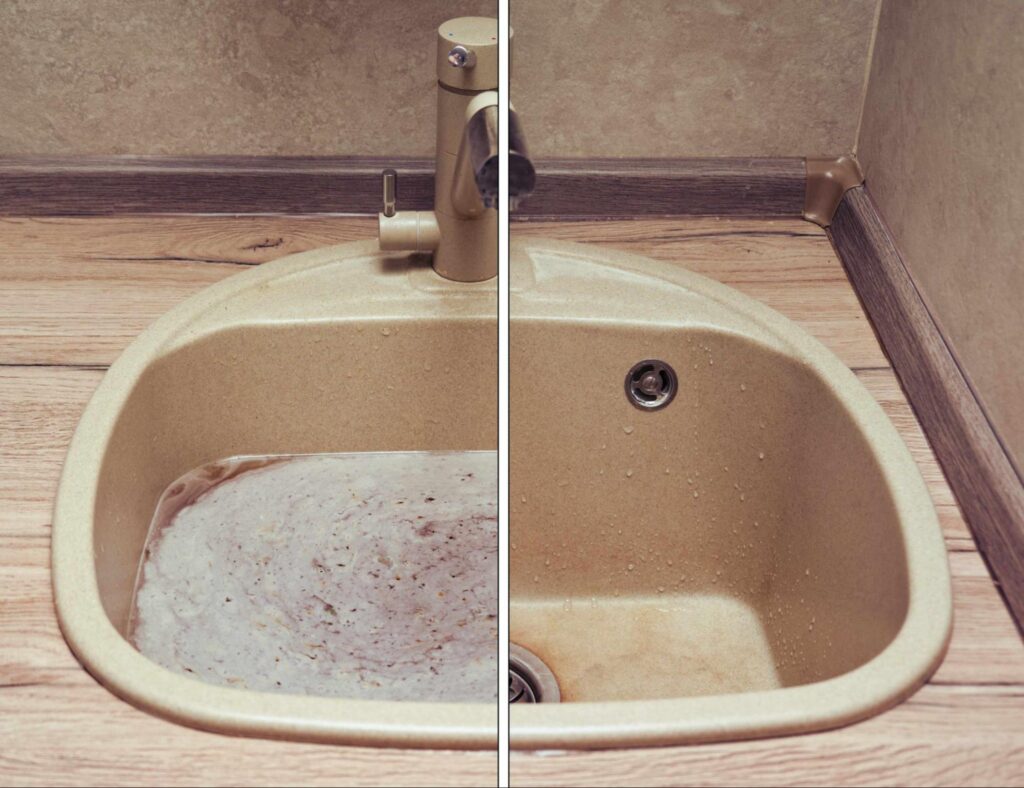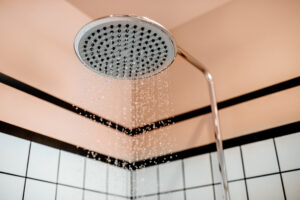It’s a problem every homeowner knows well: the slow drain, the gurgling protest from the sink, or the standing water that turns a quick shower into an unwelcome bath. A clogged drain is more than just an inconvenience; it’s a disruption that can bring your daily routine to a halt and hint at deeper plumbing issues. This comprehensive guide is designed to empower you with the knowledge to unclog a drain effectively and safely. We’ll walk you through everything from identifying the root cause to mastering simple yet powerful DIY techniques. More importantly, we’ll highlight the common mistakes to avoid and clarify those critical signs that indicate it’s time to stop tinkering and call in a professional.
For residents in and around Evansville, Indiana, knowing when to hand the problem over to an expert like Hydromax Plumbing can mean the difference between a quick fix and a major repair. By understanding both the limits of DIY methods and the value of professional intervention, you can protect your plumbing and ensure your home’s systems run smoothly. Let’s get started.
Top 6 Causes of a Clogged Drain
Understanding the causes of clogs helps you choose the right solution and prevent future problems. Common factors include:
- Hair: Shed hair tends to accumulate, especially in bathroom drains.
- Grease and Fats: Oils cool and solidify, forming sticky deposits in kitchen pipes.
- Soap Scum: When soap mixes with minerals in hard water, it leaves a tough residue.
- Food Debris: Larger food particles or fibrous wastes from sinks can build up.
- Hard Water Scale: Mineral deposits narrow pipes and capture other debris.
- Tree Roots: Outdoor pipes can be infiltrated by roots seeking water.
These factors often combine to form stubborn blockages. Understanding the root cause enables you to select a method that addresses the specific clog type.
Safety First: Unclogging Mistakes to Avoid
Safety is critical when dealing with clogged drains. To protect both yourself and your plumbing, keep in mind these tips:
- Avoid Improvised Tools: Steer clear of using bent coat hangers or other makeshift tools that can scratch or damage pipes.
- Do Not Mix Chemicals: Using different drain cleaners together can produce toxic fumes and damage pipes.
- Caution with Harsh Cleaners: Especially on older or fragile pipes, industrial-strength chemicals may cause corrosion.
- Use Tools Properly: Over-aggressive use of drain snakes without proper technique can lead to cracks or misaligned pipes.
Always use protective gloves and goggles. If any method seems risky or the clog is severe, consider contacting a professional.
Step-by-Step Guide: How to Unclog a Drain
The best method depends on the severity of the clog. Start by diagnosing the problem:
- Slow-Draining Water: Try simple fixes like boiling water or a natural cleaning solution.
- Standing Water: Use plungers or a drain snake.
- Recurring Blockages: Persistent issues may require professional help.
Below are effective DIY methods:
Boiling Water Method
Ideal for clearing minor buildups from grease or soap residue, the boiling water method involves:
- Bring a large pot of water to a rolling boil.
- Slowly pour the water into the drain in stages, allowing several seconds between pours.
- Check for improved drainage, and repeat if necessary.
Note: Avoid this method on older or delicate pipes where high temperatures may cause damage.
Baking Soda and Vinegar Method
This popular remedy relies on fizzing action and is generally suited for very minor clogs. To try the baking soda and vinegar method:
- Pour ½ cup of baking soda into the drain.
- Follow with ½ cup of white vinegar and briefly cover the drain.
- Allow the mixture to sit for 15–20 minutes.
- Flush with hot water to wash away loosened material.
Keep in mind that this solution rarely clears persistent or tough clogs and may sometimes simply push the blockage further down the pipe.
How to Use a Plunger to Unclog a Drain
For sinks, showers, or toilets, the proper plunger technique is key:
- Select an appropriate plunger (flat for sinks, flange for toilets).
- Cover the drain completely to create a tight seal.
- Submerge the plunger in water and plunge with rhythmic, controlled movements.
- Maintain the seal and repeat several times until the water drains more freely.
For double-basin sinks, block the second drain to maximize pressure.
Using a Drain Snake or Zip-It Tool
For deeper clogs caused by hair and built-up debris, a drain snake or Zip-It tool is an inexpensive and highly effective solution. Follow these simple steps to clear the blockage.
- Gently push the drain snake or zip-it tool down into the drain opening until you feel resistance from the clog.
- If using a drain snake, rotate the handle to allow the auger tip to hook into the hair and debris. If using a zip-it tool, the small plastic barbs will automatically grab the clog as you push it in.
- Carefully pull the tool back out of the drain. The clog should come out with it. It’s best to have a trash bag ready to dispose of the debris.
- Once the clog is removed, run hot water down the drain for a minute or two to flush out any remaining particles and ensure it is fully clear.
This process should effectively remove the blockage and restore proper drainage. Repeat if necessary for particularly stubborn clogs.
Store-Bought Cleaners
As a last resort, you may opt for store-bought cleaners. Choose a product—such as an approved drain cleaner—that is compatible with your plumbing:
- Follow the manufacturer’s instructions carefully.
- After the specified dwell time, flush the drain with hot water.
If chemical cleaners are preferred, be aware that overuse can cause pipe corrosion. For a different approach, you might try an enzyme-based cleaner or even an eco-friendly drain cleaner.
When to Call a Plumber for a Clogged Drain

While many clogs can be managed with DIY methods, some situations require expert attention:
- Recurring Clogs: If drains continue to clog even after clearing.
- Water Backing Up: Multiple fixtures draining slowly or water overflowing.
- Persistent Foul Odors: Strong, sewage-like smells indicating waste buildup.
- Pipe Damage: Visible cracks, leaks, or corrosion.
- Multiple Fixture Issues: Slow drainage across several sinks, bathtubs, or toilets.
Professional plumbers have specialized equipment and expertise to diagnose deeper issues. With advanced techniques and 24/7 emergency service, a trusted provider can restore system functionality and long-term peace of mind.
Hydromax Plumbing’s Pro Tips and Local Insights
In Evansville, hard water and aging pipes contribute significantly to drain issues. Regular descaling treatments and maintenance inspections can prevent mineral buildup and corrosion. For homes in older neighborhoods, tree roots can infiltrate outdoor pipes and cause blockages. Trusted experts can use advanced techniques—like trenchless pipe repair—to minimize disruption and secure lasting solutions.
Preventing Future Drain Clogs

Regular maintenance and small daily habits can help keep your drains clear:
- Dispose of Grease Properly: Collect fats and oils in the trash instead of rinsing them down the sink.
- Use Drain Strainers: Install drain strainers to capture hair and debris before they accumulate.
- Flush Drains Regularly: Pour hot water weekly to help dissolve buildup.
- Mind Your Food Scraps: Avoid washing heavy food particles or fibrous waste into your sink.
- Promptly Address Slow Drains: Tackle minor issues early with an appropriate cleaning treatment.
Routine inspections and prompt professional maintenance can help prevent severe clogs and costly repairs.
Frequently Asked Questions About Drain Unclogging
What Is the Best Homemade Drain Cleaner?
For very minor clogs, the baking soda and vinegar method may offer some help; however, its effectiveness is limited. More reliable options include using boiling water or employing tools like a plunger for tougher blockages.
Can I Unclog a Drain Without Any Tools?
Yes, for minor clogs you can sometimes use boiling water to clear grease or soap buildup. For more severe blockages, however, tools like a plunger, drain snake, or zip-it tool are generally required.
When Should I Call a Professional?
Contacting a professional is advisable if:
- DIY methods fail to clear the clog.
- The clog recurs frequently.
- Multiple fixtures demonstrate drainage issues.
- There are clear signs of pipe damage such as leaks or corrosion.
Are Chemical Drain Cleaners Safe?
While chemical drain cleaners can be effective in emergency situations, improper or excessive use can damage pipes—especially in older systems. It may be wiser to opt for enzyme-based or eco-friendly alternatives that are gentler on your plumbing.
Ensure Smooth Drains with Effective Solutions
Clogged drains don’t need to be a major headache. Many DIY methods to unclog a drain – whether it’s using the boiling water approach or the baking soda and vinegar method, employing a plunger technique, or working with a drain snake paired with a handy zip-it tool – can swiftly resolve many blockages. Although some remedies may only offer temporary relief, combining early intervention with regular preventative care can keep your plumbing system operating efficiently and help avoid costly repairs.
If DIY fixes fall short, remember that professional help is just a call away. Contact Hydromax Plumbing or download our free troubleshooting checklist to stay prepared for any plumbing challenge.




